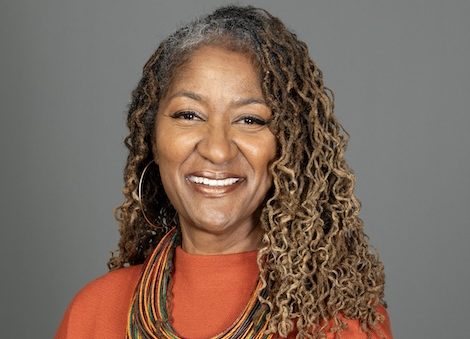
Leaders of the Movement

Founding Members of the Movement

Men and Women of the Movement
Â
“It provided the framework for the NAACP”
When Dr. W.E.B. Du Bois published “The Talented Tenth” in 1903, he saw it as an important essay about the Negro problem in America. Two years later, along with a group of “militant” Negro intellectuals, they founded the Niagara Movement in Buffalo, New York. (At that time, Negroes who demanded any thing resembling civil rights or social change were considered militant by the powers that be). The movement’s first meeting consisted of delegates from 14 states including H.A. Thompson, (New York); W.E.B. Du Bois, John Hope, Alonzo F. Herndon and his son, Norris B. Herndon, (Georgia); Fred McGhee, (Minnesota); J. Max Barber, (Illinois); William M. Trotter, Clement G. Morgan and Robert Bonner, (Massachusetts); Henry L. Bailey and W.H. Hart, (Washington, D.C.); and B.S. Smith, (Kansas). Though 59 individuals were invited, only 29 actually attended.
The Movement was founded primarily to oppose the conciliatory policies of Booker T. Washington as he had outlined them in a famous speech in 1895 called the “Atlanta Compromise” where he advocated manual and industrial training for the Negro as a means of gaining economic security. They renounced the speech and focused on the abolition of discrimination and all distinctions based on race, and called for an immediate end to racial segregation and disenfranchisement.
As envisioned by Du Bois, “the talented Tenth” described the likelihood that one out of every 10 Black men would become leaders of their race in the world, through methods such as continuing their education, writing books, or becoming directly involved in social change. In furtherance of that ideal, Du Bois stated, “Men we shall have only as we make manhood the object of the work of the schools – intelligence, broad sympathy, knowledge of the world that was and is, and of the relation of men to it – this is the curriculum of that Higher Education which must underlie true life. On this foundation we may build bread winning, skill of hand and quickness of brain, with never a fear lest the child and man mistake the means of living for the object of life.”
The Niagara Movement was the first “militant” post-Reconstruction organization established to demand civil rights for Black people and to champion full equality in all things governmental, political, civil and judicial. It was considered the “mighty current” of change that called for opposition to racial segregation and disenfranchisement and any policies of accommodation and conciliation. The latter part was directed specifically at Washington.
Initially, the group was scheduled to meet in Fort Erie, near Buffalo on the Canadian side of Niagara River but records have differed as to the exact reason for the discrepancy. One source claimed they were refused accommodations in Buffalo and the other stated that they wanted to meet in a quiet, isolated place without any distractions. However, they were on one accord relative to the purpose of the meeting. Before they adjourned, the movement was divided into several committees, according to states, and Du Bois was named the general secretary.
That same year, the movement published a Declaration of Principles, which was written mostly by Du Bois. It demanded basic human rights and full manhood suffrage now, henceforth and forever. This was contrary to Washington’s policies of accommodation, conciliation and patience over militancy. Furthermore, they rejected the impression of his notion of assenting to inferiority and submissiveness; also support for Washington drew many Blacks away from the Niagara Movement. The declaration noted that though some progress had been made much was left to be desired and any practice of discrimination and segregation was intolerable regardless of the source, be it government, business or even the church.
Some of the principles the movement demanded included suffrage for all, civil liberty, economic opportunities, decent housing and safe neighborhoods and equal access to quality education. In addition equal justice in the court system was paramount including allowing Blacks to serve on juries with others, fair and reasonable punishments, and a total and complete overhaul of the justice system, which treated Blacks unequally at every level.
The movement made enormous efforts to control the public opinion that resulted from the way others stereotyped Blacks in a negative way which affected how employers, public officials, law enforcements and the rest of society treated America’s Black citizens. They described the way labor unions boycotted Blacks and denied them equal union memberships. How Black soldiers, who risked their lives, were met with hostility in and out of uniform, and were not allowed the free use of public accommodations and transportation. They called for the nation to treat Black soldiers fairly by rewarding them for their service and to stop denying them promotions and the benefits of attending military academies (West Point, etc.). Black soldiers were forced to serve in segregated units even after they had shown their skills and patriotism as during the Civil War and beyond as the Buffalo soldiers.
The document also placed a list of duties upon Black people on whose behalf the Niagara Movement had been established. They were “the duty to vote, respect the rights of others, to work, to obey the laws, to be clean and orderly, to send our children to school, and to respect ourselves even as we respect others.” It was published as an appeal to the American people.
After a year or so, money became scarce and there were only 170 members. The movement toiled incessantly as the defenders of the rights of America’s Black citizens and asked loudly how could “the land of the free” deprive men of their humanity because they possessed a different skin color; how could America rejoiced in a progressive nation while stealing the ballot boxes from its citizens? The men of the Niagara Movement cried out for freedom, justice and equality that were given freely to others but were denied to millions of Blacks.
The new organization experienced “growing pains” and structural deficiencies in addition because of a lack of central leadership, permanent headquarters and full-time staff, they were unable to attract mass support. However, members organized protests, distributed pamphlets, wrote letters to members of Congress and the President, and lobbied against Jim Crow laws.
The second meeting of the Niagara Movement took place at Harpers Ferry, West Virginia, the site of John Brown’s raid; it lasted for three days. Du Bois later described the meeting as “one of the greatest meetings that American Negroes ever held.” On entering the site, the members removed their shoes and socks in honor of the historic event that had taken place there in the quest to free four million Black slaves. But they were vocal in denouncing the violence that took place at Harpers Ferry almost a half a century earlier.
Black women played a visible role in the second meeting; some of them were spouses of the male members. They included Ida D. Bailey, O.M. Waller, Gertrude W. Morgan, H.F. Murray, Mollie L. Kelan, Sadie Shorter and Charlotte Hershaw. The movement continued agitating for better conditions for Black people within the legal framework though they did not achieve any historic or landmark court rulings until they disbanded and was absorbed into the National Association for the Advancement of Colored People (NAACP).
In 1908, the problems and indeed the wretched condition and treatment of the Negro, were highlighted after a race riot occurred in Springfield, Illinois. Barely ten years had passed since “Plessy v Ferguson” was enshrined as the law of the land and the movement and eventually NAACP laid every aspect of the Negro’s case before the nation. Despite the aforementioned landmark decision, the Niagara Movement maintained that it was even more important for Negroes to press for the immediate implementation of their civil rights, their constitutional rights and the rights that were guaranteed by the 13th, 14th and 15th amendments.
The principles of Niagara Movement were used as the foundation to establish the NAACP and Du Bois acted as a “bridge” between the two organizations. As the movement faded, another organization came into focus. Du Bois invited Mary W. Ovington to be a White member of the movement in its waning days and she in turn attracted other White liberals who, together with the remaining members of the movement, formed a multiracial panel with nationwide representation that became the NAACP.Â






